Maybe both
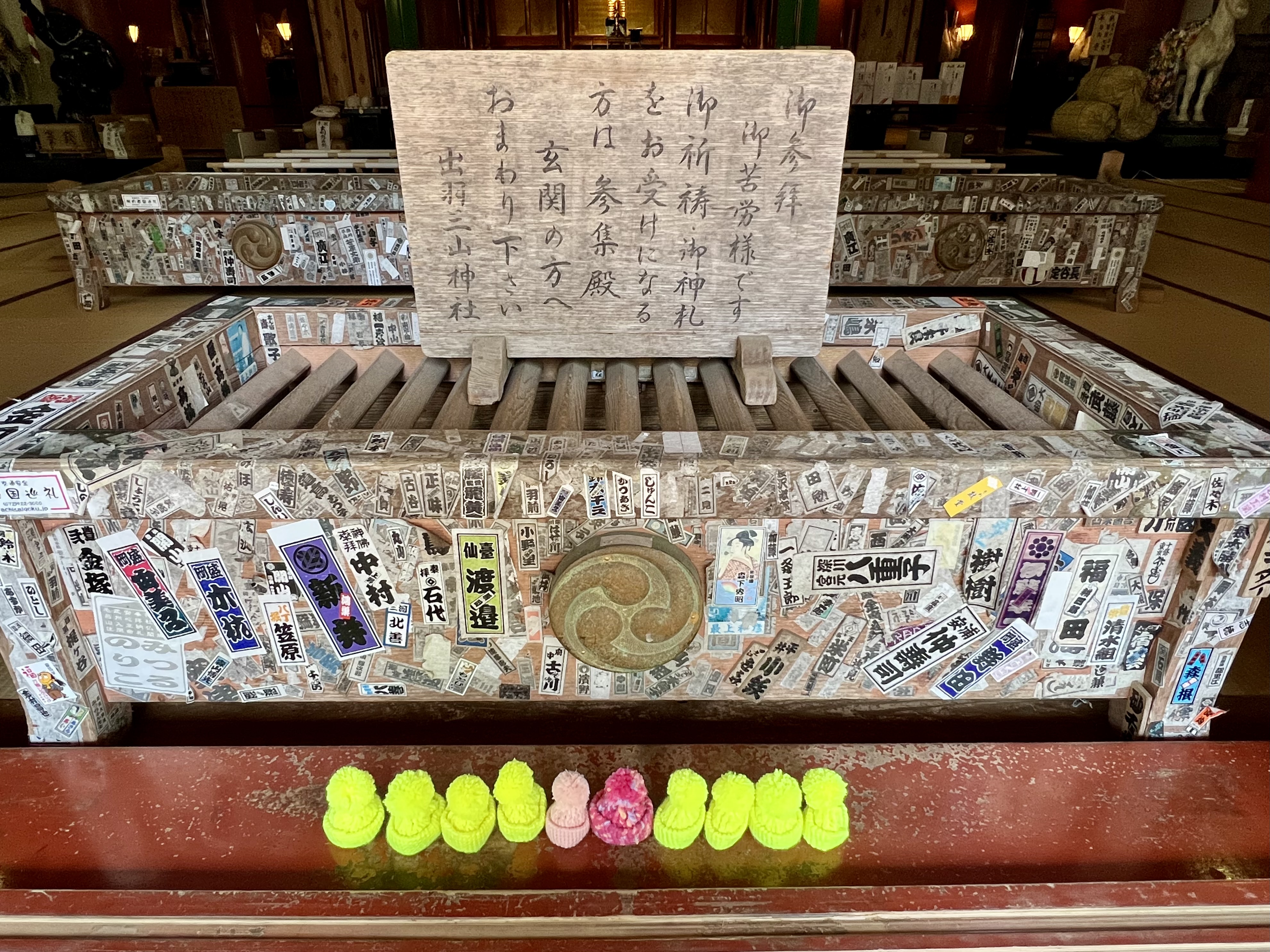
For over 1,000 years, people in Japan have used paper name tags called senjafuda, to mark their visits to shrines and temples. I have seen these in the most unexpected places — behind the guardian statues at Yamadera, on high ceilings of shrines, and plastered all over the walls the fabulous double-helix shrine, Sazaedō.
Yet to my ignorant eyes, they looked like ancient graffiti.
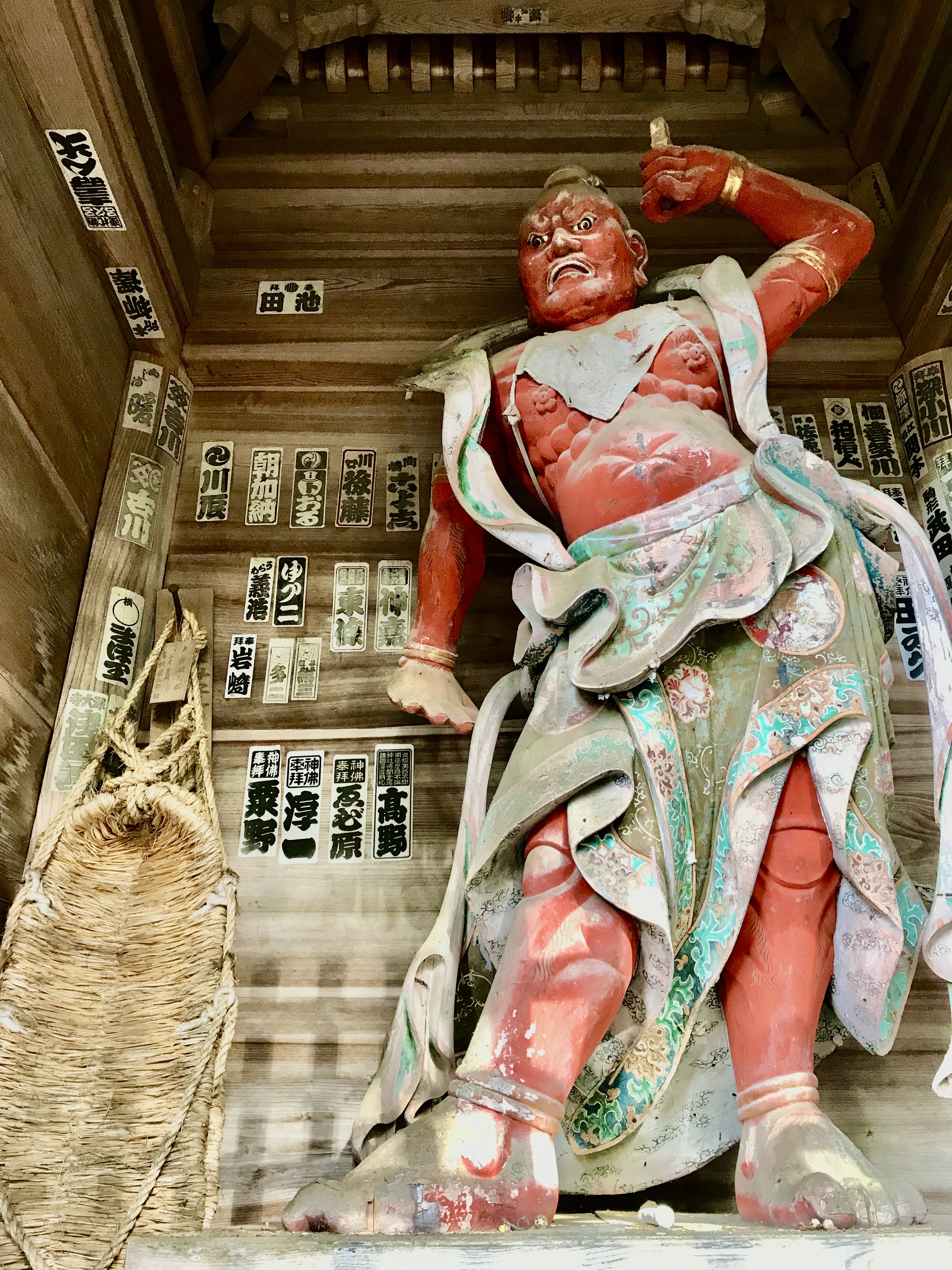
How did they get there? Why were they put there? Isn’t it disrespectful to plaster the hallowed halls of holy places with stickers? These are the questions that kept me awake at night. No one I asked about them could provide me with a satisfactory explanation. I had no idea what they were even called.
However, during completely unrelated research, I stumbled upon some answers.
Senjafuda’s origins
Senjafuda, 千社札, meaning “1,000 Shrine Notes,” are votive slips left at shrines and temples by devout visitors. The practice dates back to the ninth century when people began carrying senjafuda during pilgrimages to the 33 temples dedicated to Kannon, the Buddhist deity of mercy, or while on quests to visit 1,000 Shinto shrines. The 千, literally “one thousand,” in the name is more figuratively used to mean “a lot of.”
Senjafuda are effectively calling cards bearing the names and addresses of the pilgrims. They are generally black on white and written in a distinctive calligraphy style using sumi ink.
After prayers and offerings, pilgrims would leave senjafuda as proof of their visit to the sacred spot. They would attach them to the pillars, walls, or ceilings. With their names kept safely in the shrine or temple, visitors believed they would continue to receive the blessings of the sacred place even after they had physically departed.
Originally crafted from wood, copper, or brass, by the middle of the Edo era (1603–1867), they were being made from paper — and their popularity surged. The era was plagued by three severe famines, prompting the populace to grow fervent in their supplications to Inari, the Shinto kami associated with grains and prosperity. As a result, leaving your senjafuda at 1,000 Inari Shrines throughout the land became all the rage.
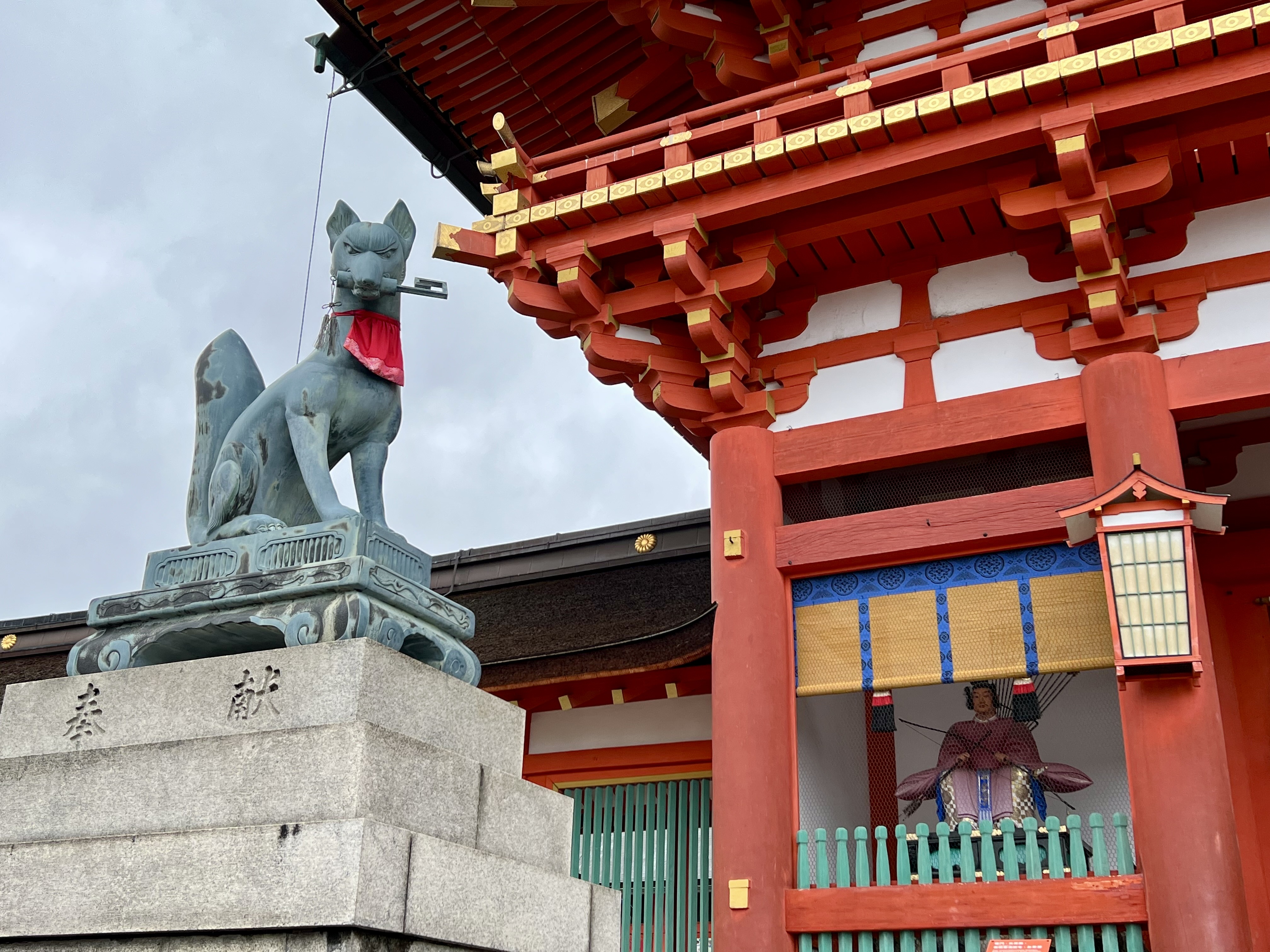
The more obscure the placement, the better
The placement of these votive stickers evolved into a friendly competition among the faithful, each vying to place their senjafuda in the most obscure places. Even sacred trees were not exempt from being plastered with stickers.
As the years passed, placing the stickers in hard-to-reach spots became a point of pride. Worshippers used their walking sticks or other longer poles as tools. They would attach two brushes and a clip to the end of their sticks, use the brushes to spread the rice-based adhesive, and then affix the note using the clip.
Out of respect for others, pilgrims would refrain from placing their senjafuda on top of someone else’s. As a result, the votive slips are often squeezed together, filling every nook and cranny of the older and more popular shrines and temples. The ceiling of Sazaedō is a perfect example.
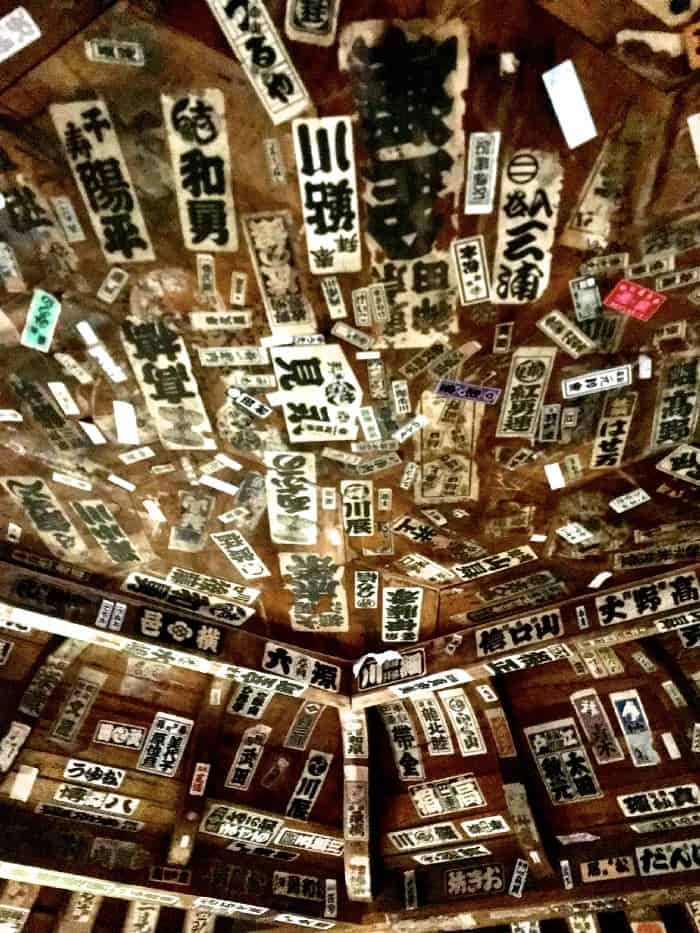
As woodblock printing evolved, more intricate and elaborate printed designs replaced traditional handwritten senjafuda.
Modern senjafuda
Towards the end of the 18th century, another type of senjafuda emerged distinct from those used for temples and shrines. Called kokan nosatsu, 交換納札, these name slips were designed exclusively for trading. While senjafuda served as “offering notes,” the trading notes took on a different character, featuring colorful patterns, intricate folds, and detailed etchings. They swiftly evolved into an independent art form, and trading clubs dedicated to kokan nosatsu proliferated — and many continue to thrive.
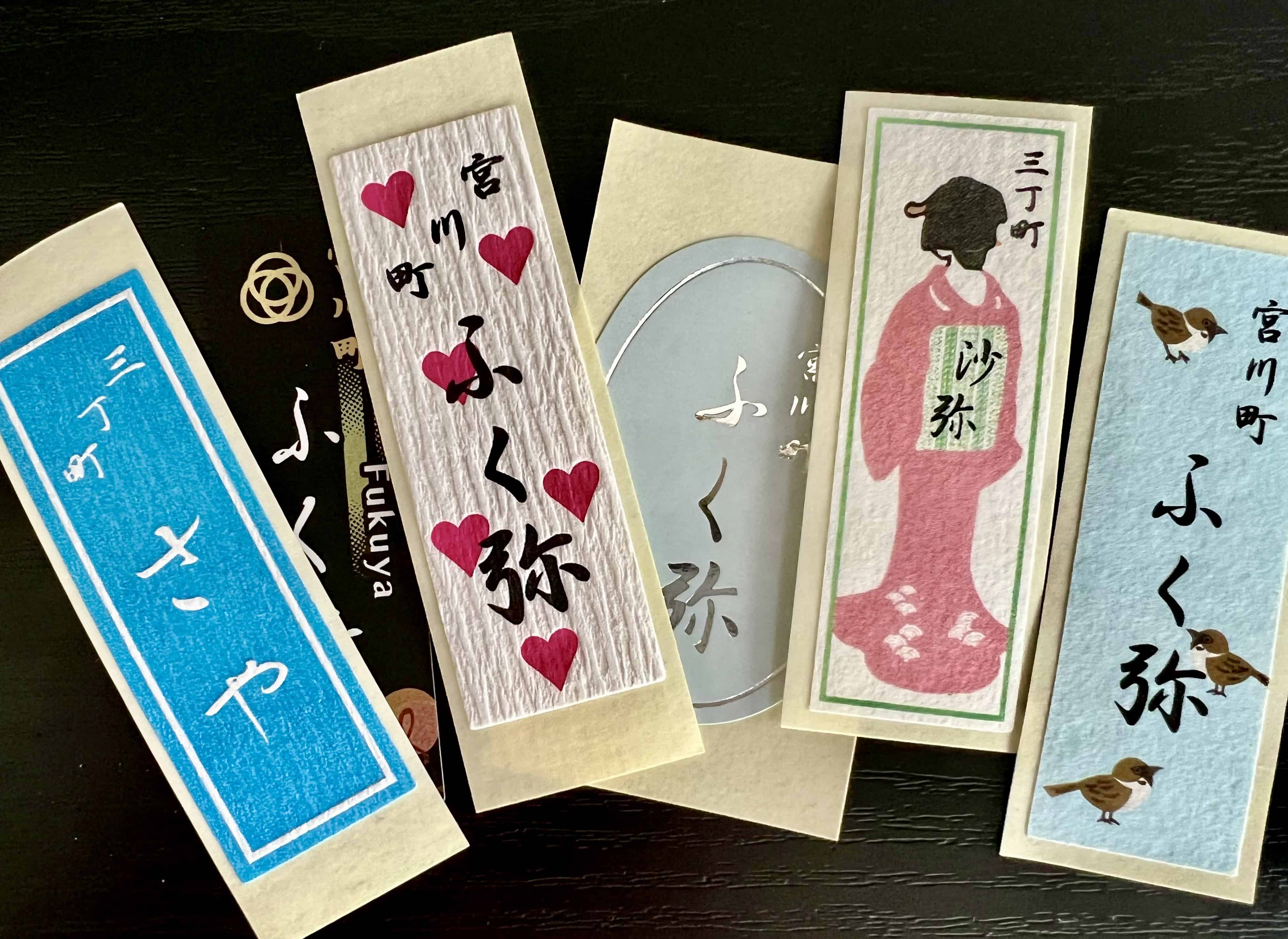
In the magical realm of Kyoto’s pleasure quarters, geiko (as geisha trained in Kyoto are called) developed their own version of kokan nosatsu. Called hana meishi, “flower calling cards,” these small colorful stickers bear the geiko’s name and are decorated with flowers and drawings of the willow world. Hana meishi are still exchanged and treasured as collectibles.
Today, the traditional form of senjafuda, with woodblock printed paper attached with rice-based adhesive, has been replaced by machine-made stickers. Although convenient, these modern stickers can damage ancient wood leaving unsightly marks when removed.
In recent years, a growing number of temples and shrines have prohibited the placement of senjafuda. Additionally, many of these places of worship have been designated as Important Cultural Properties. Affixing senjafuda to these treasured buildings could result in severe consequences, including imprisonment or fines, according to the 1951 Act on the Protection of Cultural Properties.
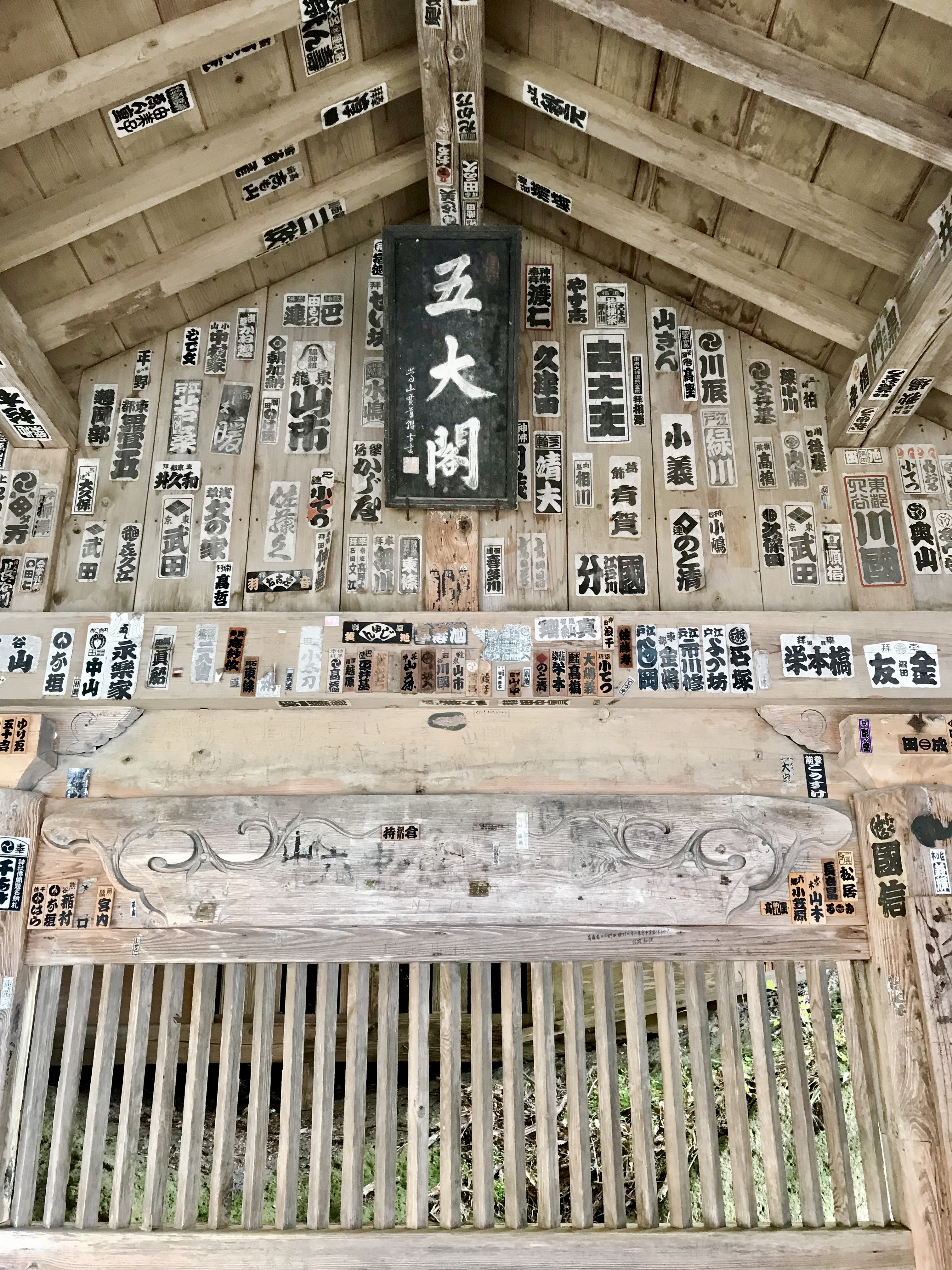
Nevertheless, ancient senjafuda still adorn the walls, ceilings, and pillars of innumerable shrines and temples throughout Japan. These votive slips provide a glimpse into bygone centuries when pilgrims traversed the land, leaving behind their “calling cards” as tokens of their devotion and spiritual journeys.
I will never think of them as ancient graffiti again.
If you have questions about Japan or suggestions for articles, please add them in the comments. For more photos and information on Japan, follow me on instagram at: https://www.instagram.com/more_than_tokyo/




